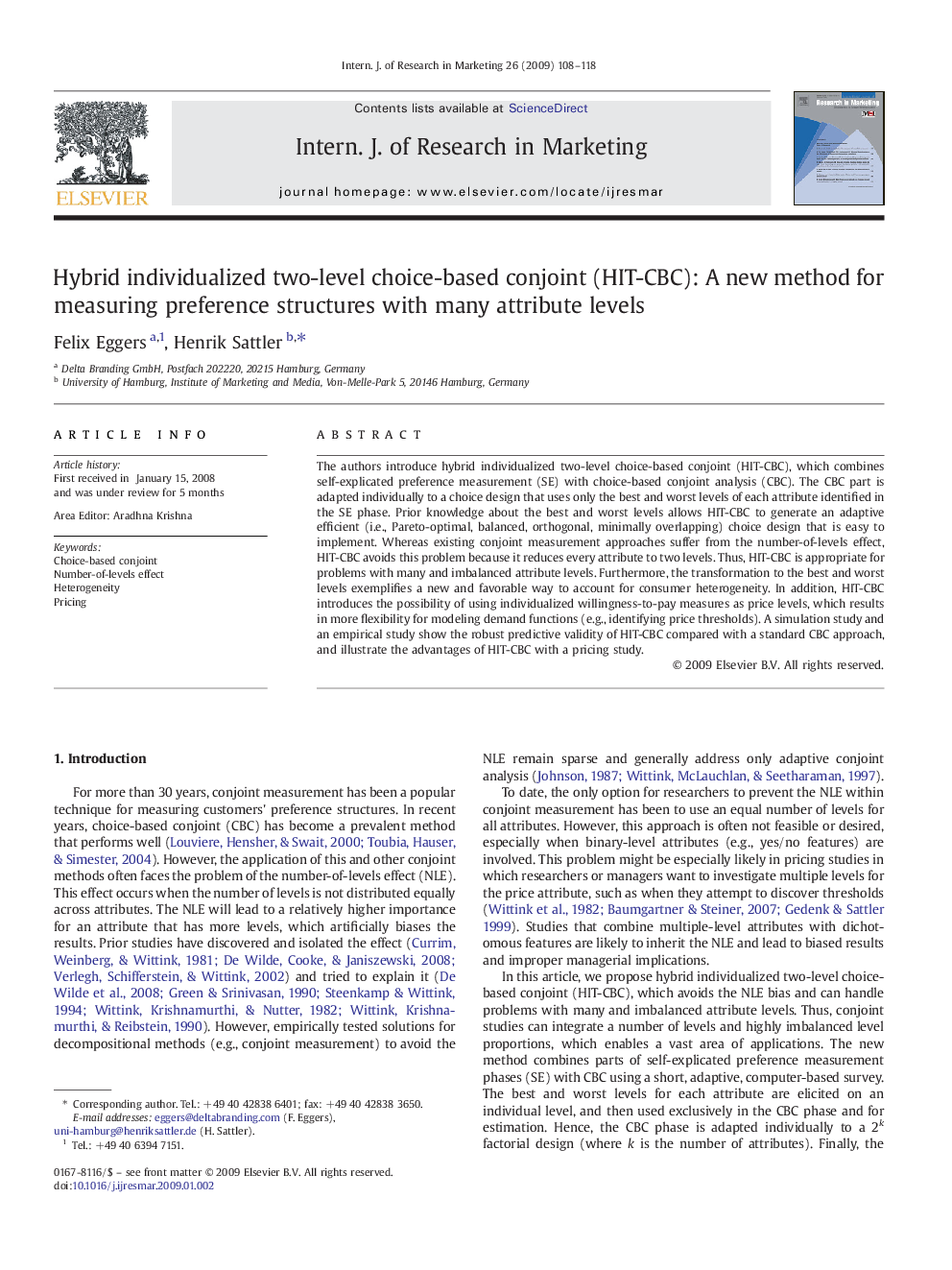| Article ID | Journal | Published Year | Pages | File Type |
|---|---|---|---|---|
| 880455 | International Journal of Research in Marketing | 2009 | 11 Pages |
The authors introduce hybrid individualized two-level choice-based conjoint (HIT-CBC), which combines self-explicated preference measurement (SE) with choice-based conjoint analysis (CBC). The CBC part is adapted individually to a choice design that uses only the best and worst levels of each attribute identified in the SE phase. Prior knowledge about the best and worst levels allows HIT-CBC to generate an adaptive efficient (i.e., Pareto-optimal, balanced, orthogonal, minimally overlapping) choice design that is easy to implement. Whereas existing conjoint measurement approaches suffer from the number-of-levels effect, HIT-CBC avoids this problem because it reduces every attribute to two levels. Thus, HIT-CBC is appropriate for problems with many and imbalanced attribute levels. Furthermore, the transformation to the best and worst levels exemplifies a new and favorable way to account for consumer heterogeneity. In addition, HIT-CBC introduces the possibility of using individualized willingness-to-pay measures as price levels, which results in more flexibility for modeling demand functions (e.g., identifying price thresholds). A simulation study and an empirical study show the robust predictive validity of HIT-CBC compared with a standard CBC approach, and illustrate the advantages of HIT-CBC with a pricing study.
